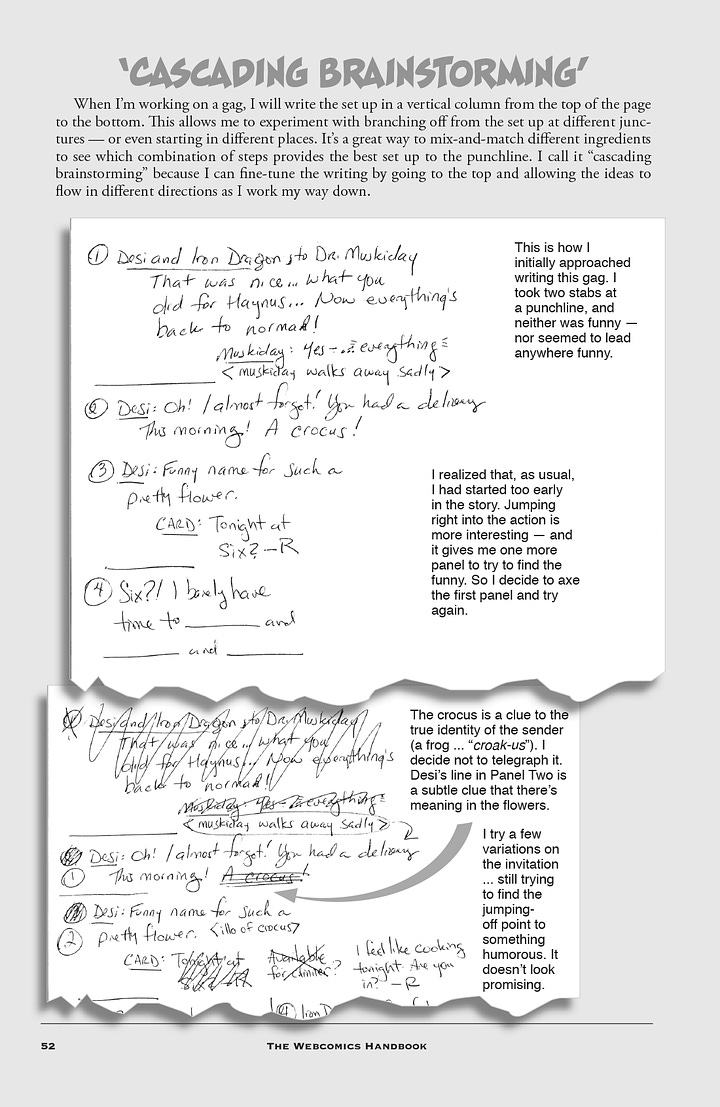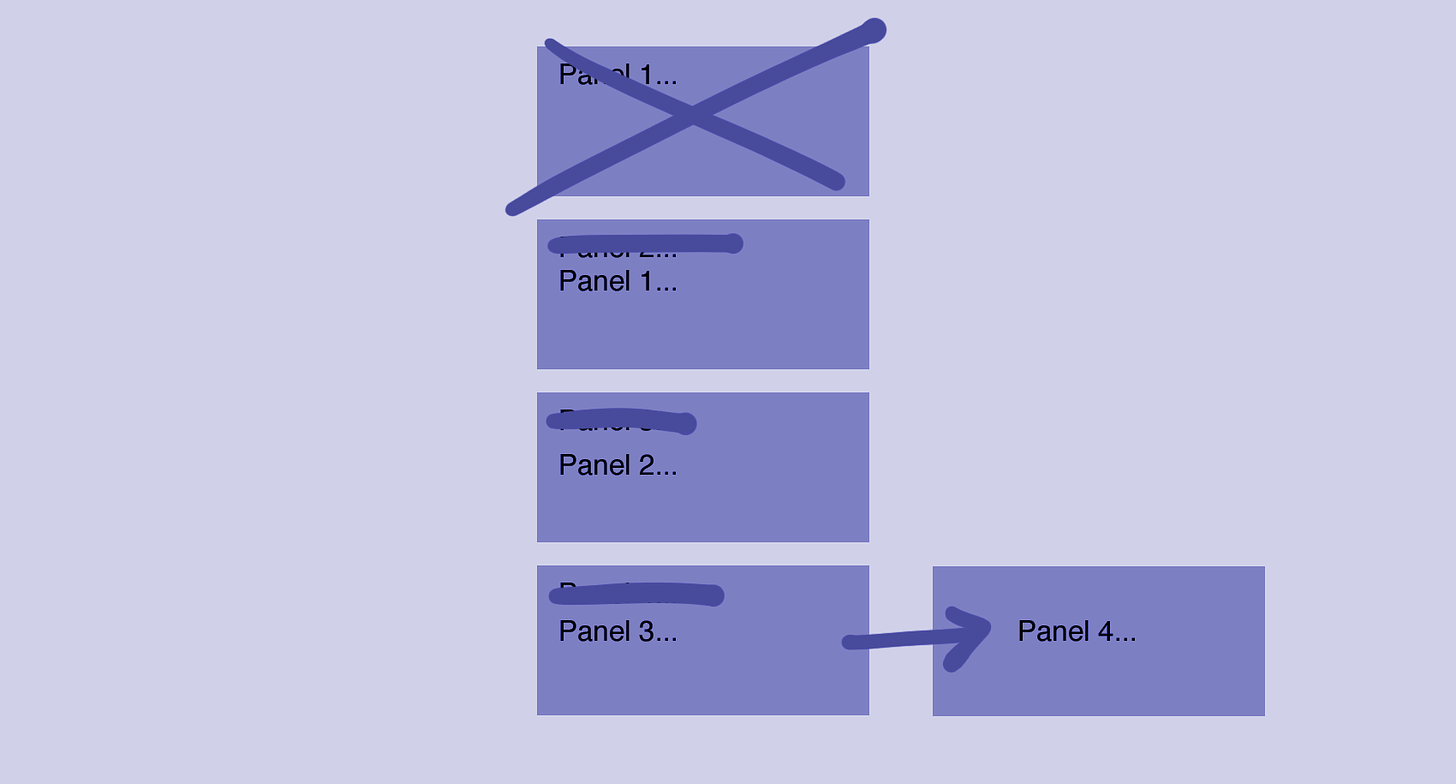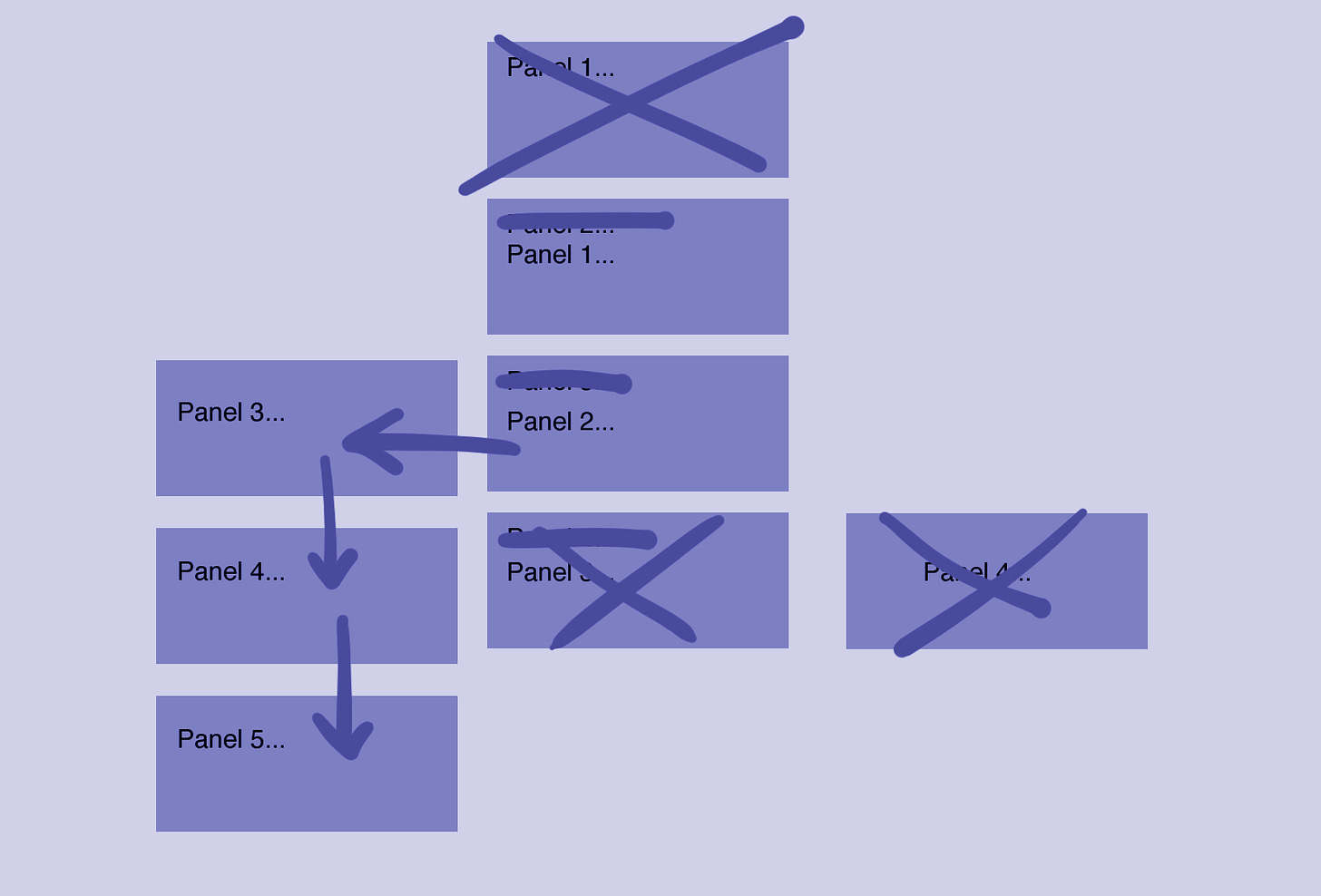Cascading Writing turorial
If you have a copy of my book, “The Webcomics Handbook,” you can find a discussion of my Cascading Brainstorming technique on pages 52 and 53. The pages look like this…

Here’s a step-by-step tutorial on how this process works. For this example, I will be trying to write a classic four-panel comic strip. I start with a clean sheet of paper in my sketchbook, and I start writing dialogue for each panel in a single column down the middle of the page.

If I hit something funny, then HOORAY! I dance my way over to my drawing table.* But that… rarely happens. Now, I actually have to sit down and write. More often than not, I find out that I really didn’t need the entire first panel. Conveniently enough, for this example, that’s exactly what happens.

I cross out the first panel (lightly), and I try to find a new punchline at the end of the string of dialogue. Any panel I cross out gets crossed out lightly because you never know when a previously “bad” bit of dialogue suddenly becomes brilliant as the parameters of your concept change!
Unfortunately, I still haven’t found the Funny. That’s where the “cascading” comes in. I think of a new direction the concept could go. In this case, I write a new Panel Three, and then I see what that leads to. Perhaps something Funny in a new Panel Four!

Nope. Still not there. Writing funny is hard. Here’s where I usually pull out another trick I wrote about in “The Webcomics Handbook” — One More Panel. If I didn’t find gold on Panel Four, I write a fifth panel… and maybe a sixth… and so forth.

The object of this is not to come up with a comic that is greater than four panels! For the sake of this example. let’s say that I found something truly Funny in the new Panel Five I’ve written.

Now I edit. What used to be the second and third panels might be combined into one. And now I have my four-panel comic strip.
Writing is hard
At the beginning of this tutorial, I made it a point to mention how I usually started in the middle of a clean sheet of paper in my sketchbook. Often, I’ll try to start on a left-hand page in the book as well. That’s because I know my “cascades” are probably going to flow over multiple sheets. In fact, by starting in the middle of a two-page expanse, I’m mentally preparing myself for the process I’m about to undergo. The cascades may go on for several columns. New cascades may start from the ashes of old ideas. I may abandon concepts entirely and earmark them so I can return to them later.
*And at the end, when I come to a combination of set-up and punchline that I really like, I actually don’t dance to the drawing table. I know from experience that writing means re-writing and re-writing and editing, and good editing needs time. I need to give my brain time to forget the mental zeitgeist that brought me to this particular writing solution. Forget the mindset. Forget the Moment.
Often, I come back a day or two later. I see all of the flaws I couldn’t have seen before. And then, it’s time to start re-writing, refining, and rethinking. The Funny is in there somewhere, and the Good Stuff is worth hunting for.




Recent comments